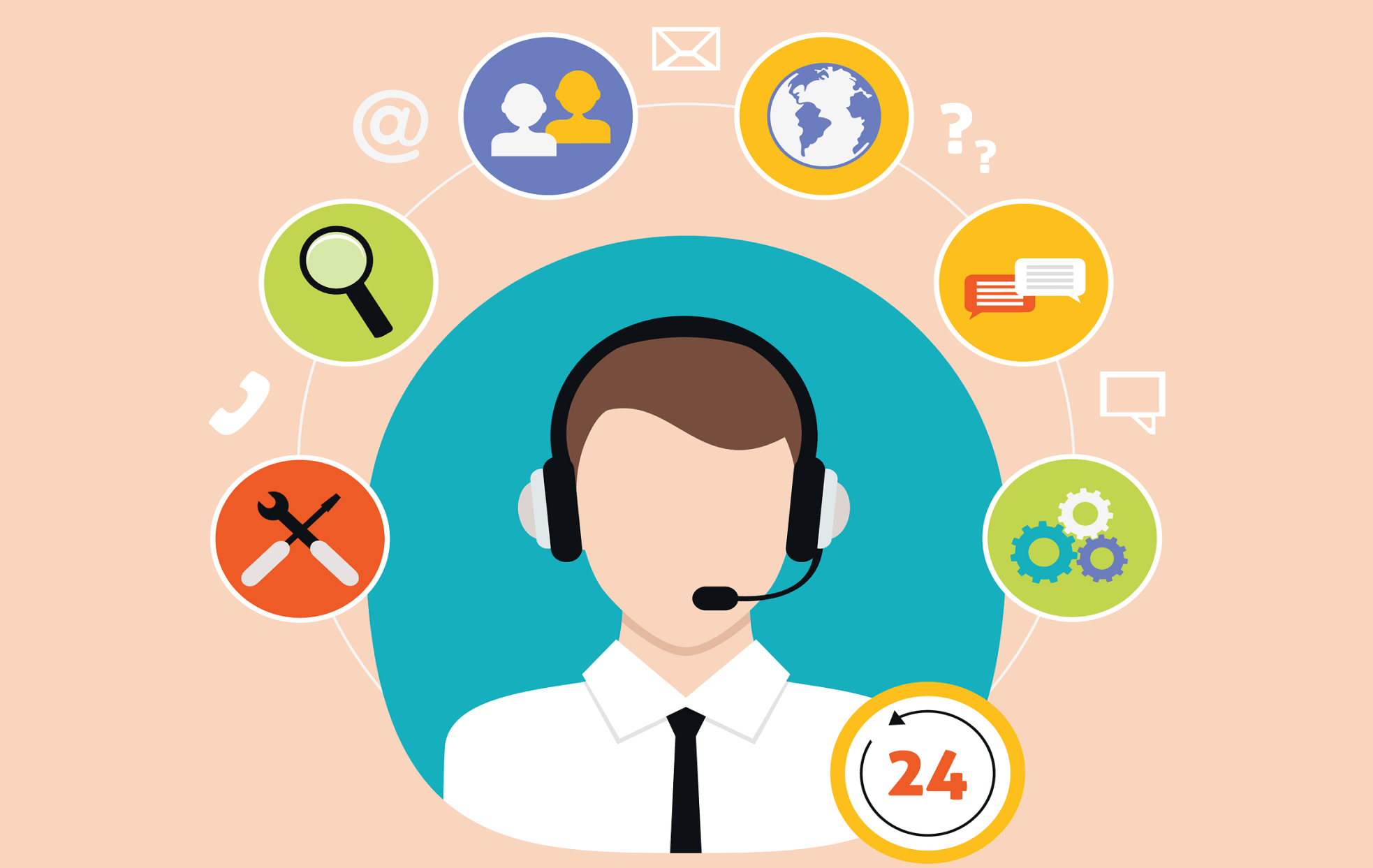The debate over customer onboarding isn’t new. Some say it is essential, others disagree citing poor conversion rates. The arguments on both sides are valid in their own way but we aren’t here to talk about the debate but rather discuss the other, less explored aspect of the framework.
We believe that a good onboarding process comes a long way as you not only reassure your potential customers that they made the right choice but let them know that they are valued. However, not all companies can deliver a proper customer onboarding process. In fact, it is a complex set of tasks that require a ton of work. This is why the SaaS-powered customer onboarding process has been at the forefront lately. It helps companies showcase their product and service in a positive light as well as it helps your customers get more familiar with your offerings.
But how do you know what is good customer onboarding? What companies should include in the package? Well, a lot, and this is the reason why we prepared a complete guide to the SaaS-based customer onboarding process. Let’s get started!
SaaS Customer Onboarding Process In a Nutshell
Let’s start our guide by taking a general look at customer onboarding and why you might want to implement something similar in your organization. So, a customer onboarding process is a set of activities that are designed to nurture new users into an unfamiliar space. Typically, the entire process is accompanied by step-by-step tutorials, voice guidance, milestone tracking systems, and if needed, an interaction history.
Why companies need customer onboarding?
As we already mentioned previously, companies need customer onboarding if they offer complex services or products. However, that is not entirely the case as it also helps you shape the tone of your future interactions.
86% of people say they’d be more likely to stay loyal to a business that invests in onboarding content that welcomes and educates them after they’ve bought. - Wyzowl.com
In other words, it reduces the general churn rate and even helps you gain more customers through positive word of mouth.
And even that is only scratching the surface. The process is known to deliver some of the best stats out there. Here are a few numbers for you to digest.
- It is estimated that without onboarding roughly 70% of new users are lost in just the first week.
- More than half of your entire trial base (approx. 55%) doesn’t care to return and try the full experience.
- Virtually half of your revenue is from existing customers, something customer onboarding helps you increase.
- A good chunk (about 35%) of new customers come from referrals.
As you can see, a proper customer onboarding process will assist you in retaining your current install base as well as fuel your future endeavors in a more stable fashion.
Why Create a Customer Onboarding Strategy?
A good marketing effort is always paired with a strategy and it is generally agreed that both are inseparable. The same goes for any customer onboarding process. This is the core reason why you would want to form a strategy first.
You define an end goal, develop a proper strategy on how to reach it, and presto, proceed to the execution phase. Naturally, all the nitty-gritty details you will refine during the process but the gist is pretty straightforward. We suggest that you keep these three things in mind when devising a goal:
- Encourage your prospects to try the product/service at least two times a week;
- Define and route a usage pattern;
- Try to make your product as much irreplaceable as possible;
You can also use data you have managed to harvest from your past experiences to see what things work and what don’t. Also, keep a good eye on your brand and public image as unlike your customers that have a ton of touchpoints, you have one. Combining this and the three aspects we’ve mentioned, you are bound to create something impactful.

A Typical SaaS Customer Onboarding Framework
Each customer is unique and has their own set of needs, meaning you can’t use the same strategy on everyone. However, what you can do, is settle on a specific SaaS onboarding process that you can iterate in case of necessity. What we mean is when a customer doesn’t want to watch a welcome video, he can skip it, and when he suddenly decides to take a look at it, he can access it from anywhere.
That is your mantra. Give your customers the ability to choose. There’s virtually nothing more pro-consumer than choice. The more options you provide, the better. Here are some of the things you need to provide your customers with:
#1 A Welcome Email — Positivity and only positivity. Show your customers that you are happy to have them and that you value them. Thank them, congratulate them with their new purchase.
#2 A Greeting Tutorial — Not to confuse with the welcome email, a greeting tutorial should help your customers get familiar with the new environment. Guide them, show them exclusive features, and help them set up things. Also, make sure that you provide a way to skip all of this as some of your customers are bound to be savvy.
#3 Encourage Usage — Your customers will have to add some info or settle on some configurations. Make sure that empty fields, unexplored options, and hidden functionality pings about their existence. Make sure your customers notice new things and are enticed to use them.
#4 (Optional) Interactive Walkthrough — Tutorials are great but what is even better, is an interactive tutorial. Let your customers see everything there is to your product by guiding them through an interactive script. After all, the best way to learn something is to try it yourself. Also, make sure that you do your walkthrough in a sandbox to avoid any confusion and unwanted changes.
#5 Data Import — Most customers come with a baggage. Make sure that data import is part of your service line. Provide them with a way to import that stuff and you will see a dramatic improvement in churn rate as it will help them use your tool more effectively and will give them the ability to settle roots deeper.
#6 Knowledge Base — It doesn’t matter if your product is simple and easy to use. In other words, your deliverable should not have a lot to it. Having a proper knowledge base system in place is a must with the core reason being that your product will surely get more sophisticated over time. Besides, people love reference material, especially the one that is easily accessible.
#7 Support — Once everything is ready, leave a list of contacts and channels the customer can use to get back to you.
Practices to Consider
If the above steps are not enough for you, we’ve also prepared seven practices that will surely come in handy. Do keep in mind that not all of them are applicable in every case so we suggest that you align them with your business capabilities first.
Understand Your Buyer Persona.
Knowing who is your patron and learning about their needs will allow you to keep yourself afloat longer (and even expand in size, if things go well). Try and identify what obstacles, what challanges, and what hurdles your customers face to devise an ideal onboarding customer experience.
Demonstrate value.
Show value in your offerings, make your patrons hyped. Prepare specific answers to specific problems where your product or service is the core solution. Furthermore, tailor the entire solution (if possible) around the customer and if that is not an option, provide documentation, training, or a call.
Aim to Impress.
One of the key activities you should do when delivering a customer onboarding process is to try and replicate the same steps and impressions your customers had when they first tried your product. What it was marketing hype or good performance of the product, your objective is to deliver the same feeling twice.
Consumer Holistic Goals.
Knowing what your customers want from you is only half the story. You should align your ideas and business developments with your install base. This might sound risky but allow your customers to define what is success and based on that info, develop milestones and metrics. After all, your customers are your fuel.
Gauge Success.
Knowing where to improve and where to revise will help you improve your onboarding process. We suggest that you learn about friction points, gather both employee and customer feedback, and settle on specific metrics.
Stay in the loop.
Once you landed on a deal and managed to onboard a customer successfully, we highly recommend that you stay in touch. Whether it is SMS or email, your task is to be right around the corner. If you offer an app, integrated notifications are also a good way to keep your customers informed.
Define Readable Expectations.
If your prospects don’t know what to expect, you are risking a lot of reputation. You don’t know what your patrons might think when they use your service and it can go both south and west. Settle on a framework where company representatives (it can be anyone, from managers to salespeople) define the core features, benefits, and setbacks (if present). This will ease the blow when they learn that something isn’t quite what they expected, and will save you a lot of trouble.

Tips & Tricks
Now that we’ve learned about the many different practices, let’s take a look at some tips and tricks that you can use to boost your odds even more. Keep in mind, these aren’t universally applicable nor should you use them mandatory. They are designed to help your win your customers in a more effective way:
- Explain. One of the best ways to show your commitment to a customer is to break every nook and cranny down. Essentially, try and disseminate service or product details slowly and granularly. You don’t want to dump a lot of data on them as they will feel lost and that is last thing you want from your customers. One task at a time.
- Personalize. Just like every business, every customer has its own set of needs. Try to make your offer a personalized one, even if it means to reconfigure some things. The more you can craft it to your consumers, the better.
- Track. Now if possible, make sure that you are omnipresent (unless asked otherwise). Where your customers go, you go there too. If they are stuck doing something, you are the one who should be there to help them tackle an issue. This will only reassure that they made the right choice.
- Celebrate. Every small win, every baby-step, and every accomplishment is a reason to celebrate and acknowledge the work you did. It will help you grow your business and therefore, improve your current program which is a good loop in of itself.
The Three Core Metrics
Now that we’ve covered the basics and the not-so-basics of customer onboarding, let’s take a look at some of the most essential metrics to follow.
- Churn Rate. It goes without saying, you build a consumer onboarding program to reduce the Churn rate. The more your product is irreplaceable, the less likely you are to lose relationships. Not following this metric means you are losing money and people.
- Retention Rate. While often part of the Churn Rate block, we suggest that you also take a look at your retention rate. Measure retention every-so-often to see how many customers shifted, as well as how long they’ve managed to stay. As an example, if you lose a lot of people during the first two weeks, then maybe consider revising your welcome message and greeting tutorial.
- Customer Lifetime Value. CLV is basically the number of profit you can gain with every new customer onboarded. Usually, the longer you stay with a customer, the more you get but there are other things you need to keep track (like upfront expenses) to have a better picture of the situation.
Should You Opt?
It depends on the need but generally speaking, opting for a saas onboarding service is beneficial. Such companies have the necessary expertise to deliver good results, as well as they have the time to deal with it. After all, onboarding is something that might seem simple but it is not. If you need dedicated SaaS onboarding tools or seek advice, we are here to help you out. Just give us a call or drop us a message and we’ll make sure your questions are answered.







